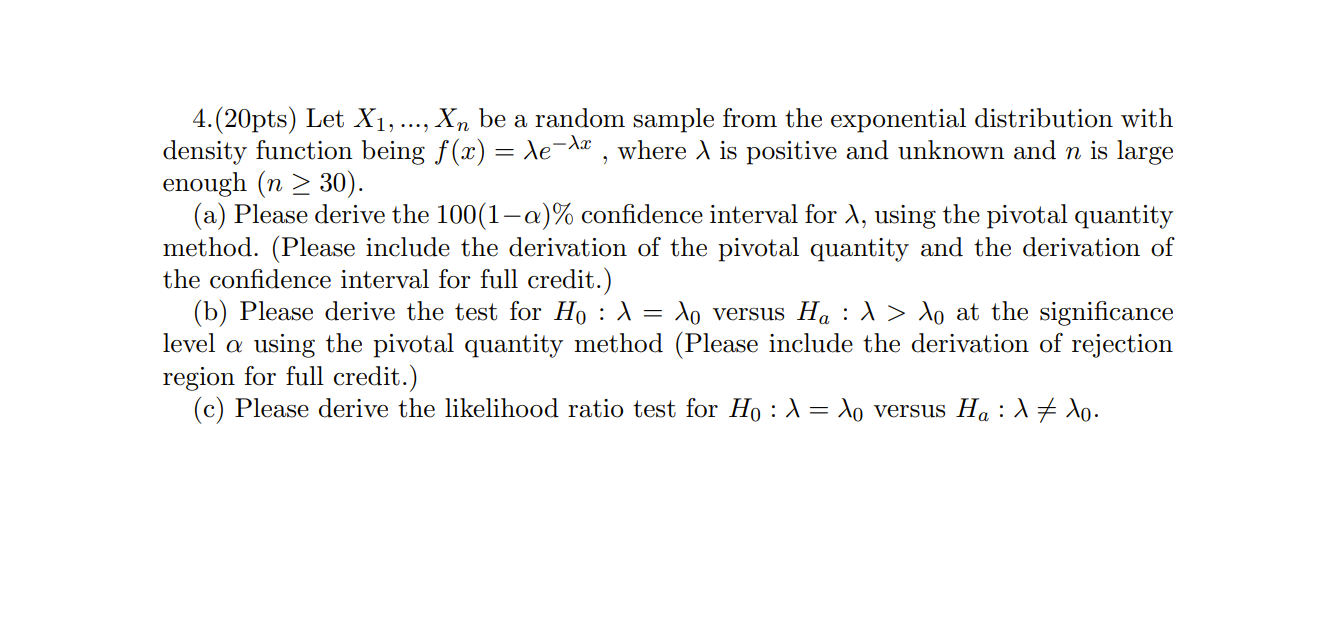Question
4.(20pts) Let X1, ..., Xn be a random sample from the exponential distribution with density function being f(x) = ?e??x , where ? is positive
4.(20pts) Let X1, ..., Xn be a random sample from the exponential distribution with density function being f(x) = ?e??x , where ? is positive and unknown and n is large enough (n ? 30). (a) Please derive the 100(1??)% confidence interval for ?, using the pivotal quantity method. (Please include the derivation of the pivotal quantity and the derivation of the confidence interval for full credit.) (b) Please derive the test for H0 : ? = ?0 versus Ha : ? > ?0 at the significance level ? using the pivotal quantity method (Please include the derivation of rejection region for full credit.) (c) Please derive the likelihood ratio test for H0 : ? = ?0 versus Ha : ? 6= ?0.
 4. (20pts) Let X1, ..., Xn be a random sample from the exponential distribution with density function being f(x) = de-, where A is positive and unknown and n is large enough (n > 30). (a) Please derive the 100(1-a)% confidence interval for 1, using the pivotal quantity method. (Please include the derivation of the pivotal quantity and the derivation of the confidence interval for full credit.) (b) Please derive the test for Ho : A = do versus Ha : > > do at the significance level a using the pivotal quantity method (Please include the derivation of rejection region for full credit.) (c) Please derive the likelihood ratio test for Ho : A = do versus Ha : > # do
4. (20pts) Let X1, ..., Xn be a random sample from the exponential distribution with density function being f(x) = de-, where A is positive and unknown and n is large enough (n > 30). (a) Please derive the 100(1-a)% confidence interval for 1, using the pivotal quantity method. (Please include the derivation of the pivotal quantity and the derivation of the confidence interval for full credit.) (b) Please derive the test for Ho : A = do versus Ha : > > do at the significance level a using the pivotal quantity method (Please include the derivation of rejection region for full credit.) (c) Please derive the likelihood ratio test for Ho : A = do versus Ha : > # do Step by Step Solution
There are 3 Steps involved in it
Step: 1

Get Instant Access to Expert-Tailored Solutions
See step-by-step solutions with expert insights and AI powered tools for academic success
Step: 2

Step: 3

Ace Your Homework with AI
Get the answers you need in no time with our AI-driven, step-by-step assistance
Get Started


